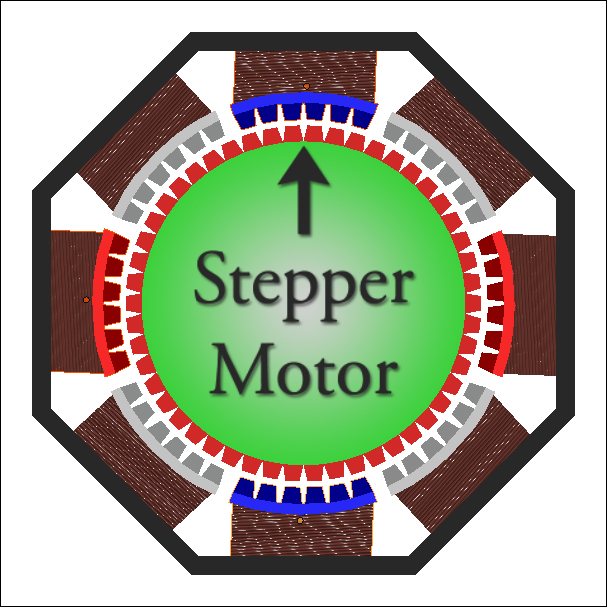Generally, the answer is stepper motors. Stepper motors are motors that move in small discrete angles of rotation instead of spinning like most regular motors. This allows you to make definite, easily repeatable motions. It is also one reason why there are minimum sizes on the detail that you can make. A 3D printer can't make detail smaller than one step of the stepper motor.
Then, through wires, drums, gears, and threaded rods, the motion of the stepper motor is scaled to fit the medium that the printer uses. A hobbyist printer that uses a filament of the ABS or PLA plastic that feeds off of a reel will provide the kind of detail that those plastics can support. A high-end stereolithography printer may get much finer detail.
The next graphic is a diagram of the insides of a stepper motor. The rotor is in the center. It rotates and is attached to a shaft that pokes out of the motor. The stators are attached to the outer shell of the motor. They are wrapped with copper wire and an electrical current is run through the wire to give each stator a negative charge, a positive charge, or no charge as indicated in the next graphic. In the graphic, red represents a positive charge, the blue is a negative charge, and the grey has no charge.
The rotor in the center has 50 teeth. The stators around the outside have a total of 48 teeth. It's this imbalance in the number of teeth that allow the stepper motor's rotor to walk around step-by-step.
The positive charge of the rotor is attracted to the stator teeth that are negatively charged. In the following screenshot, you can see that the rotor teeth aren't well aligned with the uncharged stator that is counter-clockwise from the blue stator. To do a single step, the stepper motor controller changes the negative charge from the blue stator in the following screenshot to the stator just counter-clockwise to it. Then, the teeth in the rotor try to align with that stator. So, the rotor moves just a little, a step. To continue moving more steps, the stator with the negative charge keeps moving to the next stator, as follows:

The stepper motor is then attached to a control belt or a shaft with a screw thread to give the printer precise control of the print head and the printing bed. There may be one or more stepper motors controlling a single axis.
